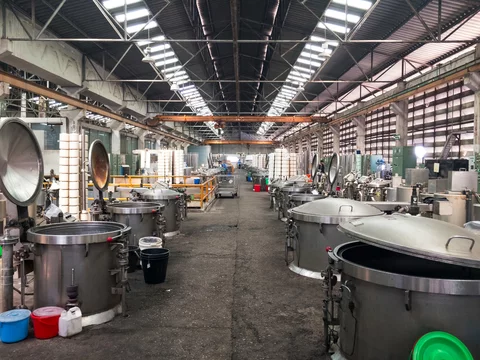
The construction industry uses products which demand high performance in many areas–they must be durable, corrosion resistant, heat stable, weather resistant, lightfast, safe, environmentally friendly, and cost effective. Organic pigments, available in aqueous dispersion form, can meet almost any physical demand required by a durable topical coating and can be used in many applications such as wood stains & identification, industrial coatings, recycled products, foam & fiberglass insulation, construction site dust-abatement tackifiers & polymers, adhesives, and polishing compounds. These are applicable to ceramic tiles, concrete, cement & mortar, stucco & plaster, paper & fiberglass composites & laminates, mildew & fire resistant gypsum wallboards, rubber mulch, coil coatings, and cool roofing products.
Increasing The Durability of Buildings -When paints are used on the wall, then these paints prevent moisture from entering the walls. Now a days, most new technological paints are used that are moisture aversive in nature. Some improved technological pigments are used in these types of paints.
Safety Passage- Safety of public buildings is very important, and for this purpose, some safety-way guidance systems have been brought into existence. Some incidents in the underground railway stations and crowded public places, has drawn out attention towards the various safety measures. Generally, these systems are fitted in the safety passages, public buildings, factories, stations & tunnels, ships.
Cool Roofing – Greater the solar radiation, higher will be the heat absorption by the roofs of the houses. To dissipate the heat, ‘Cool Coating’ technology has been invented. This new technology focuses on reflecting solar radiation. If traditional pigment colors are used for coating, the roof will absorb infrared radiation. Therefore, a new type of pigments has been taken for this purpose.
Coating – The two type of pigments are used for coating purposes: Organic Pigments, Inorganic Pigments. Organic pigments gives various bright colors, but, these colors are not very lightfast and opaque as compare to inorganic pigments. Inorganic pigments are used for those applications where color warranty should be there against sunlight and other natural elements. For metal roofing, a special type of pigments are used, which is called as ‘Complex Inorganic Colored Pigments’.
Wood Conservation – Wooden materials are frequently used in all kind of construction works, right from houses to factories, from bridges to railways. To conserve these wooden materials, some specific kinds of pigments are used.
Concrete Coloring – Before the placement of the concrete, pigments are mixed with it to create color. This is the most common method of concrete colorizing. The quantity in which the pigments are mixed and the proportion of their mixing can be altered. By altering these proportion and quantity, the color varieties can be brought in the concretes.
Colored Asphalt – Colored asphalt is used in the traffic direction, for sporting facilities, in gardens, at school yards and squares. The color fastness and durability will depend upon the pigments and the proportion in which they are combined with each other. Cooler Tiles, Metal Panels, and Shingles – Pigments are used in various commonly used house-roofing products. These pigments are used in tiles, metals, panels and shingles. Various cool pigments are used today for coating concrete, clay tiles and metal panels.